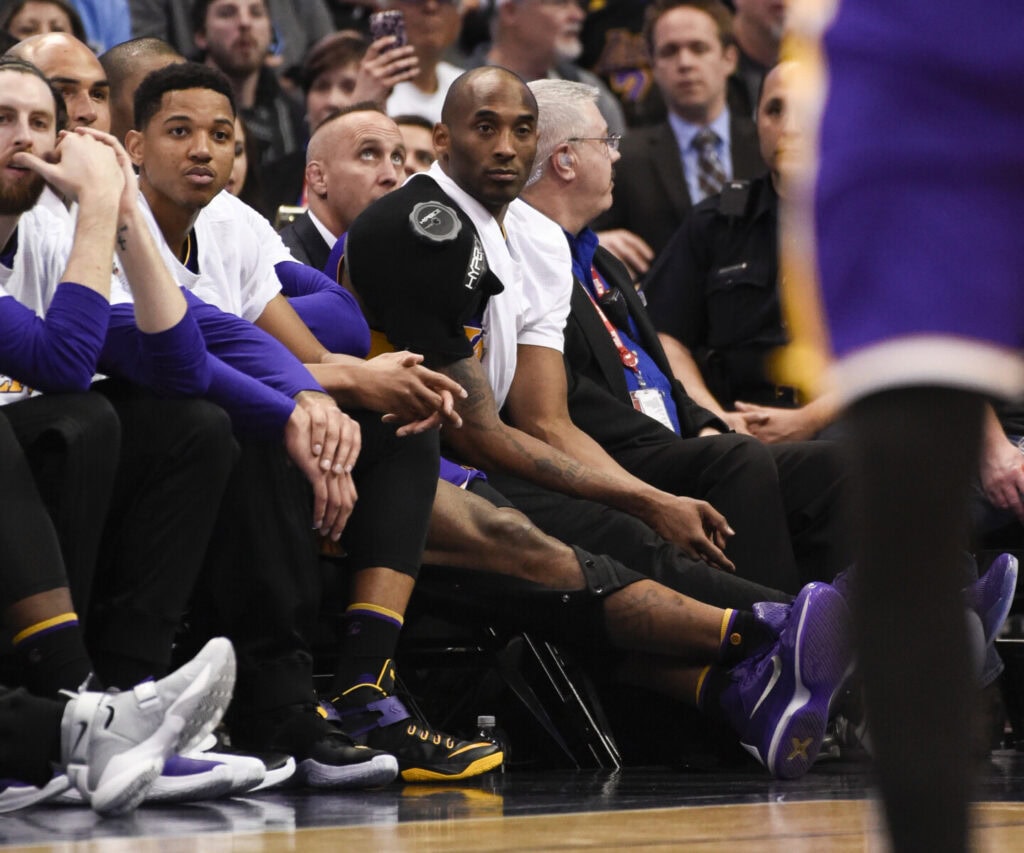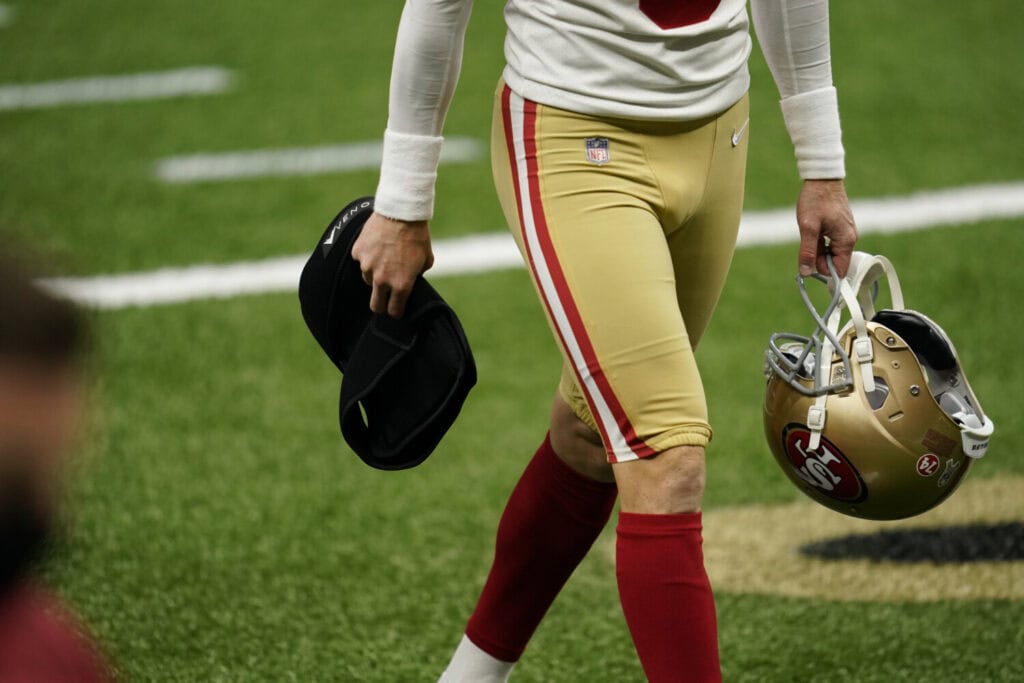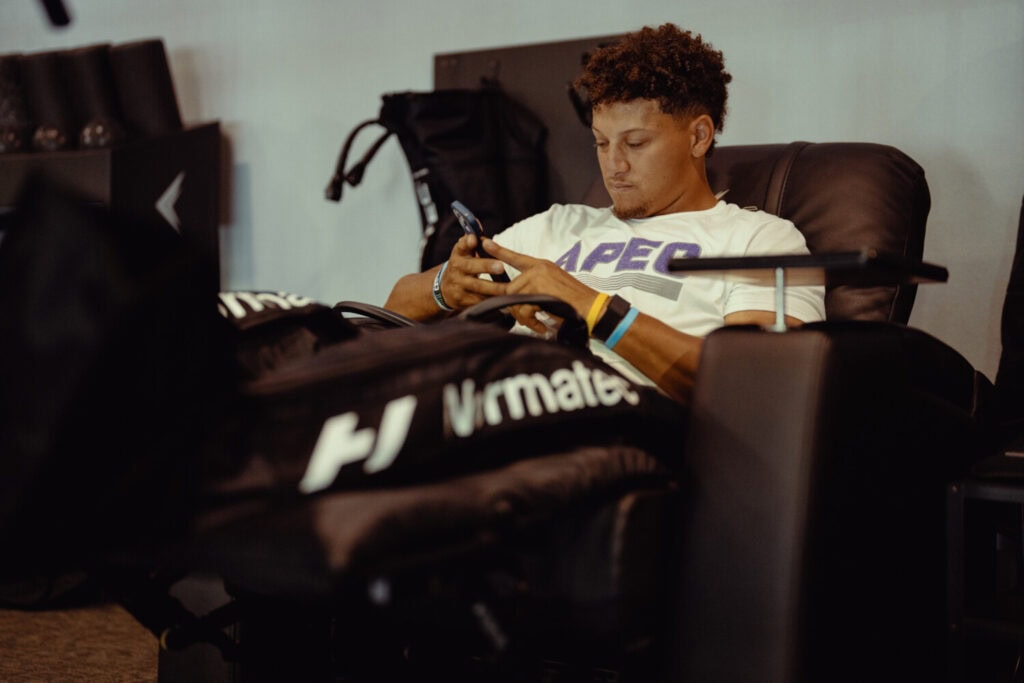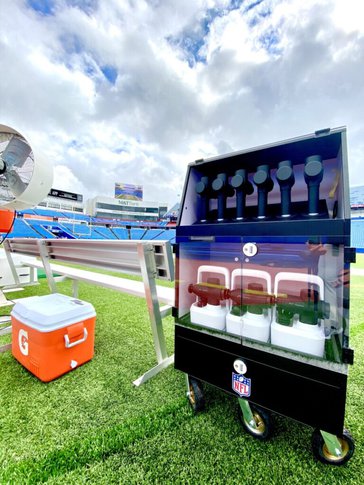Health is wealth in life and on the gridiron. Learn why football’s biggest stars and the shield itself are betting big on recovery.
The National Football League is an 82-year-old institution worth over $140 billion when merely considering sum franchise valuations.
Sportswear empires such as Nike are reported to pay $220 million a season to have its Swoosh logo stamp star players, while the league’s 10-year TV contract with Fox alone is understood to be worth over $2.2 billion.
Appearing on-field on Sundays isn’t cheap. Just ask Tom Brady, who played his final two seasons in unbranded Under Armour cleats because the cost for logo visibility was more than the Baltimore brand could pony up.
So, if working with the NFL is so expensive, how is Hyperice, a 12-year-old sports tech startup, all over the league’s storied sidelines?
The answer? It would be far more expensive if they weren’t.
“If players are available? We have a chance to win,” Reggie Scott, VP of Sports Medicine & Performance of the Los Angeles Rams, told Boardroom.

Spending over 21 years as a trainer in the NFL in a tenure that’s seen two Super Bowl wins, the president of the Professional Football Athletic Trainers Society knows just how priceless recovery is in both a personal and professional sense.
“At PFATS, we have think tanks about how we can advance the profession,” says Scott. “Hyperice worked backwards. They went into the trenches, the athletic training rooms, and asked, ‘What do you guys need?’ These products solved a lot of our problems and they’ve always been that way.”
As Super Bowl Sunday approaches in Scottsdale, athlete-investors like Patrick Mahomes will be reaching for their Hypervolt massage guns between drives while fans will be experiencing Normatec recovery boots from the comforts of the NFL-sponsored Westin Hotel.
Ahead of the festivities, Boardroom caught up with Scott and Hyperice CEO Jim Huether to find out just how this pivotal partnership came to be.
From the Black Mamba to Monday Night Football
Everyone associated with sports, tech, or entrepreneurship in the last decade has a Kobe Bryant story.
Hyperice CEO Jim Huether, a man who lives in the intersection of all three, is no different.
“Kobe is a big part of the founding story,” Huether told Boardroom. “He was the first athlete that helped us evangelize and helped us with product development. The name Hyperice is actually named after Kobe’s Hyperdunk shoe.”
As the story goes, Kobe played part of his latter Lakers legacy with a torn rotator cuff. To ease the pain in-game while on the bench, he wore and tested a Hyperice device meant to provide coolness and compression to his shooting shoulder.

Always innovative and at the cutting edge, those with a keen eye picked up on the IRL beta-testing that was much more than product placement.
“Our first purchase order ever was by the New York Jets,” says Huether. “For $850.”
Whether or not that purchase order was to test the product in-house or keep Island Revis afloat, the word around the NFL and NBA soon spread about Hyperice.
“Elite athletes know their body,” says Scott. “If they use a product and come back and use it again and again? That is all the validation I need because they know when something works.”
Over the course of his 21 years working with elite athletes in the NFL, Scott has seen the tide change on injury transparency and investing in recovery.
As a solution, Hyperice came into the space at precisely the perfect time.
“When I first got in the NFL? You don’t come in the training room unless you’re hurt,” Scott says. “You need to recover and that’s the space they attacked because it wasn’t there. Recovery is almost a separate entity and it’s just exploded. Hyperice grabbed that space and made it a one-stop shop.”
For particular players and partners in the NFL, Hyperice really is a one-stop shop when it comes to recovery.
Since being named the Official Recovery Technology Provider by the NFL in 2020, Hyperice has collaborated directly with the league and PFATS to take top-tier technology from the training room to the sideline.
The co-branded Recovery Zone houses devices that are impervious to extreme climate conditions, capable of heating up, cooling down, massaging, or compressing athlete muscles right when they need it.
This Sunday, all eyes will be on Patrick Mahomes under the Scottsdale sun, chasing his second Super Bowl championship in only his sixth season.
To win that race, he’ll need an agile ankle and a strong throwing arm. Thankfully, he’s been using and testing the tools to make that happen for years.
The Athlete Advantage
What do Patrick Mahomes, Ja Morant, and Christian McCaffrey all have in common?
Fame, accolades, and millions come to mind. However, the three winners of the genetic lottery have all invested in maintaining their athleticism both literally and figuratively.
Each serving as athlete-investors at Hyperice, the young superstars play a part in making sure their bodies and the brand win by testing new innovations at the apex of the action.
“We beta tested [the Normatec Go sleeves] with Ja on the sidelines last year during the playoffs,” says Huether. “He gave them out to all the athletes and the response was amazing. That’s when we decided it’d be a consumer product.”

By merging word-of-mouth marketing with the most important mouths (and bodies) in sports, Hyperice has become a behemoth across associations and athletes of all origins.
Back in 2020, Hyperice was valued at over $700 million according to Bloomberg. Much of the funding came from that of the NBA and the NFL’s 32 Equity. The surge continued alongside the aforementioned athlete-investors, as well as Naomi Osaka and Rickie Fowler. This success is a stark contrast to the early days when Huether came on.
“We were doing like $400,000 in revenue and I was the fifth employee,” Huether says. “At the time, having a lot of athletes as investors in the brand was really innovative. It created a different level of incentive when it came to product development.”
Just how different?
“In a lot of cases, if an athlete invests in a brand it might be passive or just more social posts,” says Huether. “For us? Patrick Mahomes and Ja Morant are helping us with product development. We’re sending them prototypes sometimes years in advance and they’re giving us feedback on what changes they would like to see.”
While the earnings have skyrocketed, the mission’s remained the same. Positioning itself as an athlete-backed brand angled on innovative disruption similar to Apple, Dyson, or Tesla, Hyperice has surpassed would-be sporting good peers by dialing in as a tech brand.
By doing so, the company has built athlete equity — literal and figurative — by being authentic and vital in the space.
“We knew the athletes were using our products like Troy Polamanu and Odell Beckham,” Huether says. “But with the NFL? They actually invested in the company with 32 Equity. Their vision around it was having their players healthy, playing longer, and feeling better to improve the game. The health and wellness of the athletes is their asset. It was a win-win and it really did help their athletes.”

As Hyperice continues to grow in regard to revenue, recovery, and visibility, its top-tier athletes will continue to test and use their latest innovations.
While keeping McCaffrey cutting and Ja jumping are all pinnacle for the mission of Hyperice, the future of the company leans less on big-name nuance and more on the weekend warrior looking to win their race or rec league.
“We’re focused on me and you, not LeBron James or Patrick Mahomes,” Huether says. “They use our products already. We’re trying to teach the every-day human how this can affect the way they live and the way they move. It’s a very big mission and it’s a global vision.”
In some sense, that vision has only sharpened since the start.
Years ago, Anthony Katz founded Hyperice as an avid amateur athlete by night and a school teacher by day. Feeling his body beginning to break down in his 30s, he sought every solution to keep that from happening until he started to make his own innovations.
The full circle story of Hyperice continues to culminate in modern times as everyday athletes now carry Hypervolt massage guns in their gym bags and watch Mahomes make history while reclined in their living room with Normatec boots on.
It all plays to the ethos of learning from the best to ever do it and taking that knowledge back to the masses. Just ask Reggie Scott who’s seen it all firsthand.
“The Aaron Donalds of the world, the Matthew Staffords of the world? They’re consistent,” says Scott. “They’re right off the field and right into their recovery strategies. They attack that just like they attack their craft.”
Any Given Sunday
On paper, Jim Huether and Roger Goodell don’t have the same job.
In reality, they have the exact same objective.
“Keeping Mahomes healthy?” Huether says. “That’s important for the league, for the Kansas City Chiefs, and for Pat. Having our tools readily available and teaching the staff which technologies to utilize for an ailment or performance element was very relevant for the NFL.”

Of the remaining two franchises battling for the Lombardi Trophy, the Kansas City Chiefs are an official Hyperice team. While all entities have access to Hyperice recovery tools, the Chiefs, Cowboys, and Seahawks are privileged with priority access.
“They have things that are even more advanced than others,” Huether says. “We have a couple products in the Venom series that you’ll see for the first time.”
In a game of inches, one has to wonder what makes the difference.
Talent and timing, heart and mind, are all to be considered. Nevertheless, every intangible is considered when on the quest for greatness. For trainers like Reggie Scott, this comes down to tracking fatigue and even temperature.
Though the warm winters of Scottsdale make for superb Super Bowl conditions in 2023, next year’s spectacle in Las Vegas could be much different. Historically, February nights in Nevada can get as cold as 33 degrees.
While the NFL’s top talent will be there to play — rain, sleet, or snow — Hyperice will be right with them.

“Look at the Venom,” Scott says. “We used to have water hot packs that we had to pull out, put a cover on, and wrap up in Green Bay. The Venom straps on, gets as hot as a hot pad, and has vibration therapy. It’s been a game-changer for us.”
This year on Super Bowl Sunday, fans with acute eyes will watch Patrick Mahomes put it all on the line between the sidelines.
There’s a good chance, too, that they’ll see him hit his hips or throwing arm with a Hypervolt massage gun between drives.
It might not be as magnified as a million-dollar commercial, but it may mean more by being caught on live TV by way of Fox cameras backed by billions.
“We have technology that can be used during the game,” Huether says. “We can show up on TV in a creative way unlike headphones because athletes use it during the game. Could we reinvent the Gatorade model with tech and showcase it in action? Leverage the TV time and tell our story in an authentic way? That was a big part of the partnership.”
Since signing on with the NFL in 2020, Hyperice has only grown in exposure. Whether for the game’s greats like Mahomes or the pick-up player reading this article, they plan on putting all that energy back into innovation.
“Medicine in the performance field? It changes by the second,” says Scott. “It’s very alive and the subspecialty world of recovery has really catapulted. Technology has really pushed it.”
Take it from Reggie Scott, the PFATS President who helped Hyperice land an invaluable partnership with the most valuable sports league. Scoring such a lucrative land may sound like mind-numbing number crunching.
However, it simply came down to a co-sign.
“The trainers said Hyperice,” Huether says. “It was a really quick alignment and a really big moment for the company.”
Read More:
‘F1: The Movie’ is a Box Office Hit, But is it Realistic?
Why the New York Liberty Picked the Perfect Time to Pursue a WNBA Dynasty
How the Washington Nationals Turned Juan Soto Into an All-Star Nucleus
The Year of Screams: Horror is Dominating the 2025 Box Office
What’s Really Going on with LeBron James?
Read More:
- ‘F1: The Movie’ is a Box Office Hit, But is it Realistic?
- Why the New York Liberty Picked the Perfect Time to Pursue a WNBA Dynasty
- How the Washington Nationals Turned Juan Soto Into an All-Star Nucleus
- The Year of Screams: Horror is Dominating the 2025 Box Office
- What’s Really Going on with LeBron James?